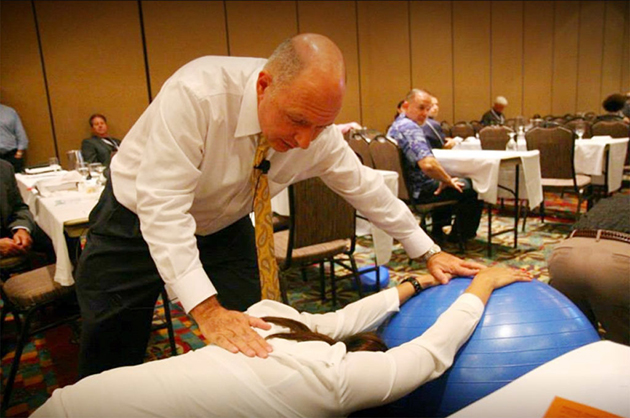Publisher's note: The author of this post is Barry Smith, who is an associate editor for the Carolina Journal, John Hood Publisher.
Mercatus Center report says patients benefit and save money in states that allow non-physician practitioners to provide more services
A new study finds that expanding the scope of practice for midlevel health care providers, including chiropractors and physical therapists, may improve the efficiency of the health care market in the United States.
The study, done for the Mercatus Center at George Mason University in Arlington, Va., found that chiropractors earn more if they work in states that allow them to offer a greater range of medical services, defined in what are called scope-of-practice laws.
"I think what you're seeing is a result of the fat being squeezed out of the health care delivery system," said Dr. Joe Siragusa, CEO of the N.C. Chiropractic Association. Siragusa said there was a time in America when chiropractic medicine was maligned. Over time, chiropractic medicine has integrated more-traditional scientific evaluation and as traditional health care has become more costly, more people are choosing to see a chiropractor.
"It's cheaper and its safer," Siragusa said.
"The science supports it."
The study was conducted by economists Edward Timmons, associate professor at Saint Francis University; Jason Hockenberry, associate professor at Emory University; and Christine Piette Durrance, associate professor at UNC Chapel Hill.

Photo from N.C. Chiropractic Association website
The study also found that direct-access laws for physical therapists appear to reduce chiropractor earnings. However, those laws do not increase wages for physical therapists. And, it found, neither scope-of-practice laws nor direct-access laws appear to affect physician wages significantly.
The Mercatus study also noted that neither chiropractors nor physical therapists are perfect substitutes for primary-care physicians.
"In certain instances, such as when patients are experiencing neck or back pain, patients may receive better-quality care at lower prices by seeing a chiropractor or physical therapist as opposed to a physician," the study says.
"Consumer welfare is likely to be improved by having greater access to lower-priced care and more choices for pain treatment."
The study noted that the medical community historically has viewed chiropractors with suspicion, and scope-of-practice laws, which vary state by state, have limited the range of services chiropractors can provide. In many states, physical therapists traditionally have worked under the supervision of physicians and only recently have been permitted to see patients without a physician referral.
Because many traditional physicians believed chiropractic practice was based on dubious science, the American Medical Association actively fought the expansion of chiropractic care and barred any association of physicians with chiropractors in the mid-20th century, the study notes.
However, chiropractors fought back and began intensive and successful lobbying efforts for Medicare to cover some chiropractic services in the 1970s.
The influence of physicians in influencing chiropractic licensing laws in many states remains visible, the study notes.
"Further, recent evidence suggests that, because they want to protect market share, physicians are reluctant to accept chiropractic as a viable substitute, and willingness to make referrals to chiropractors still appears limited," the study says, noting that scope-of-practice laws vary tremendously from state to state.
North Carolina has one of the more liberal scope-of-practice laws for chiropractors, Siragusa said.
"Thankfully, it's a lot less of an issue here in North Carolina than it is in some states," he said.
The study notes that chiropractors, physical therapists, and physicians are competing for market share in the $300 billion market for treating back and neck pain.
"Each profession will prescribe a different set of treatments. Chiropractors and physical therapists will generally prescribe less-invasive treatments, whereas physicians will be more inclined to prescribe drugs or surgery," the study says.
























